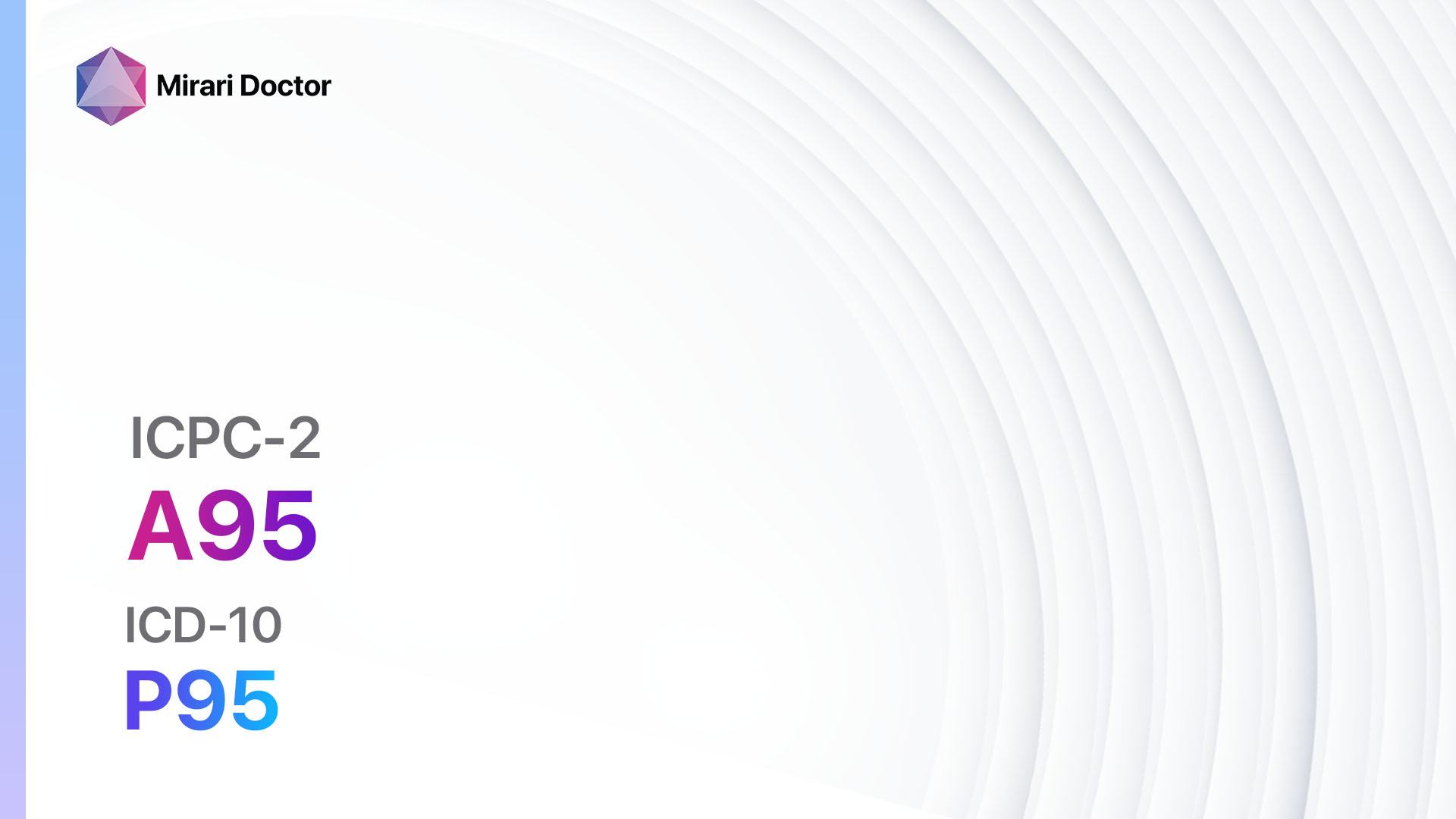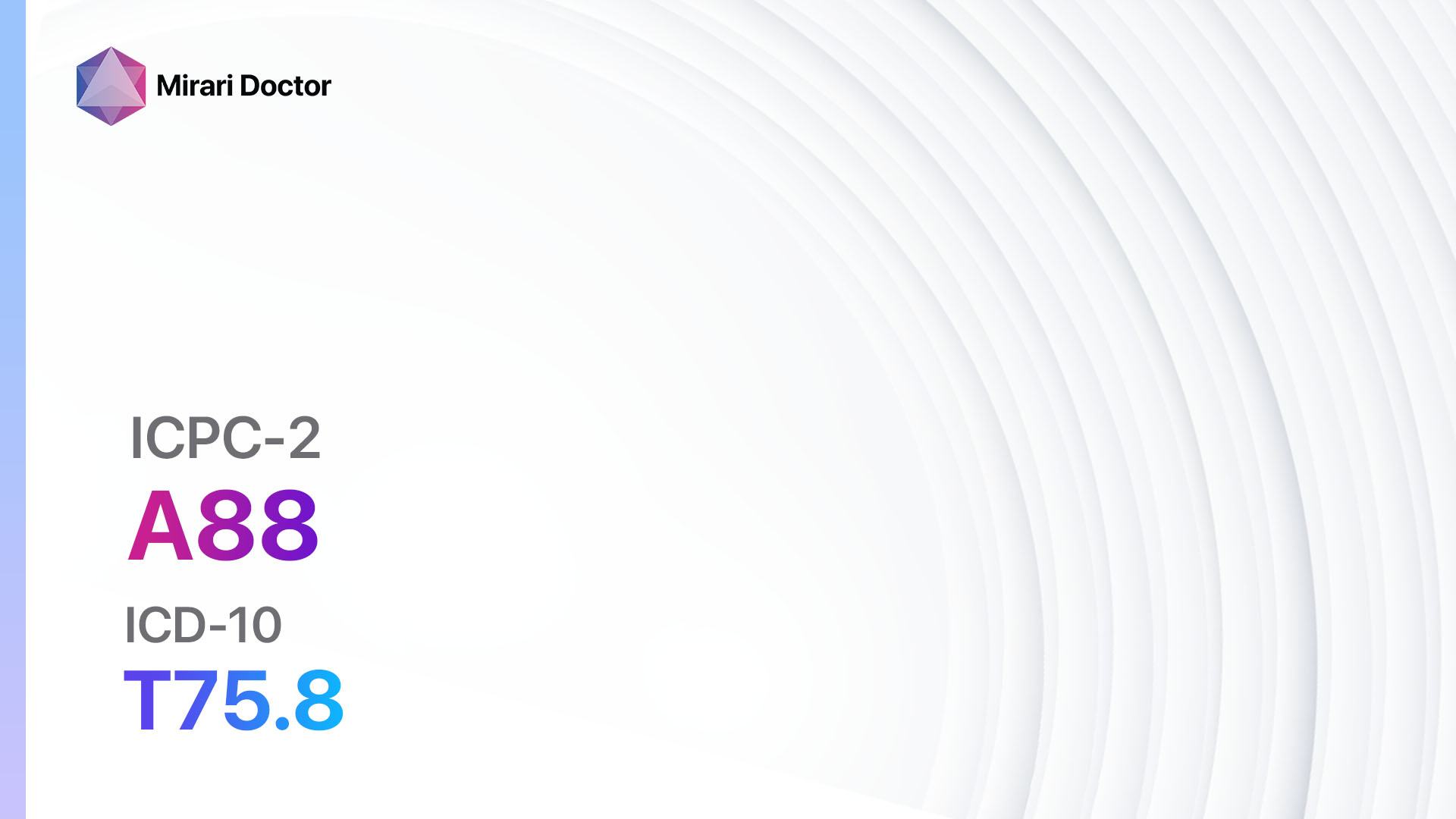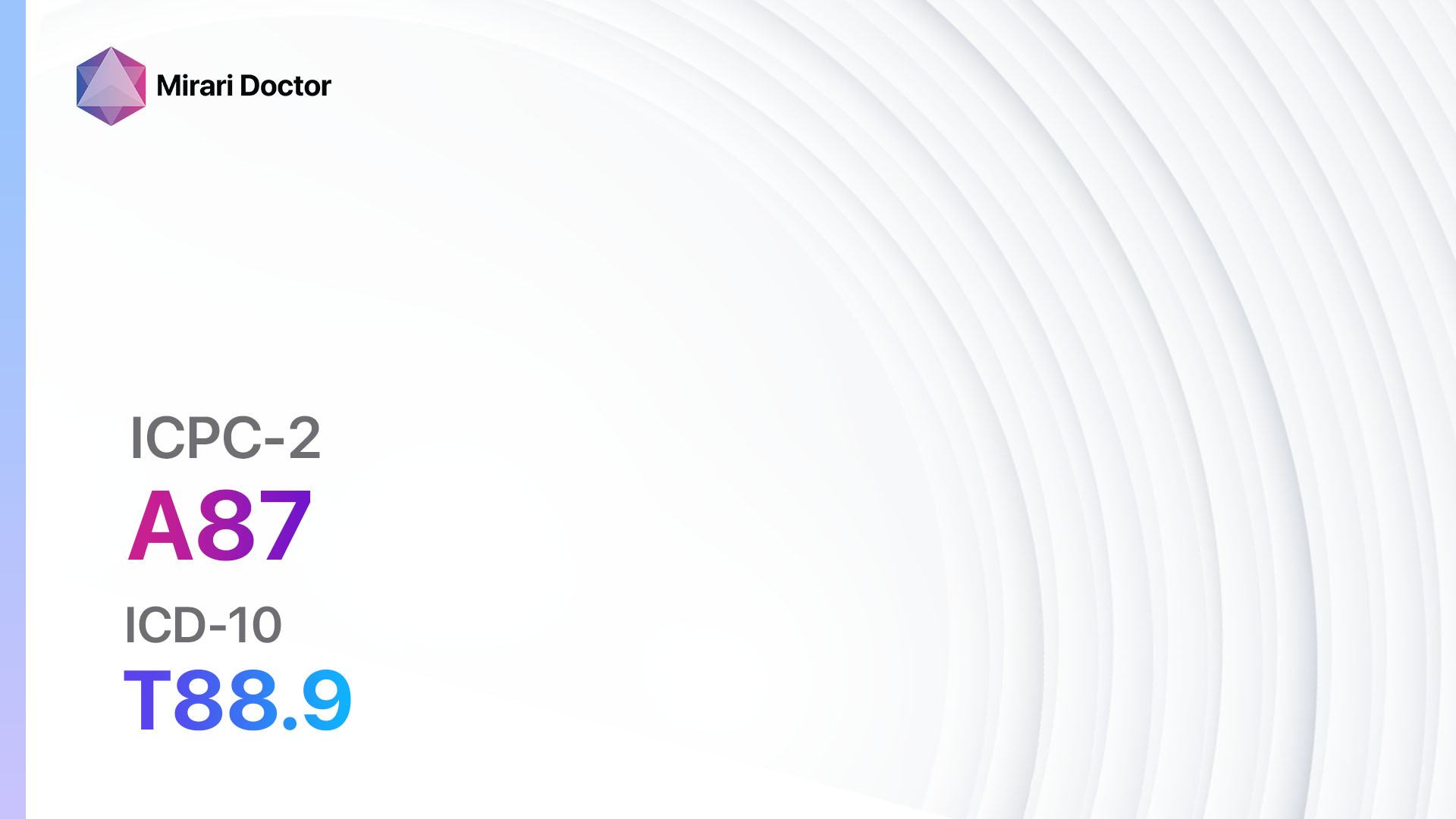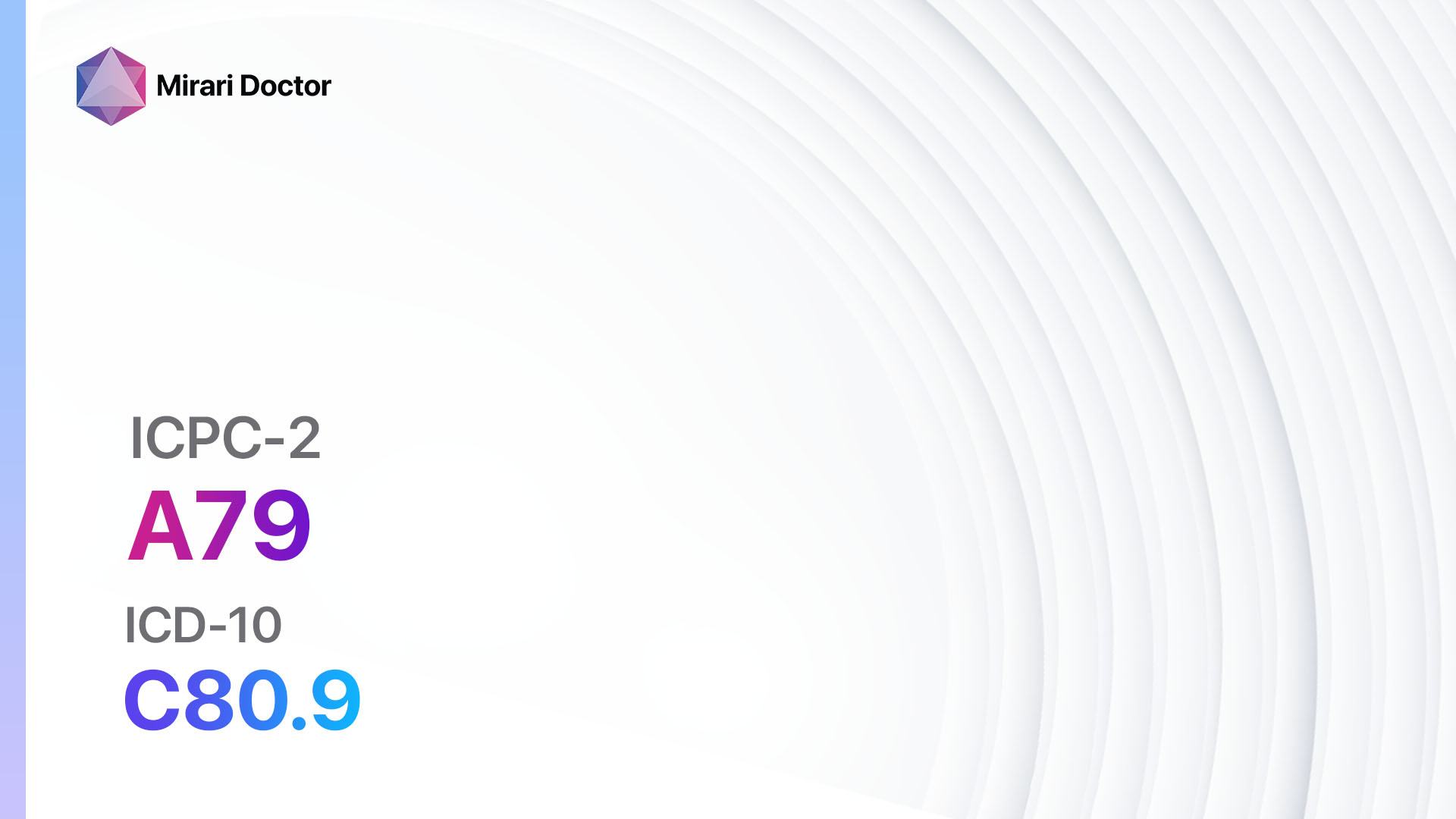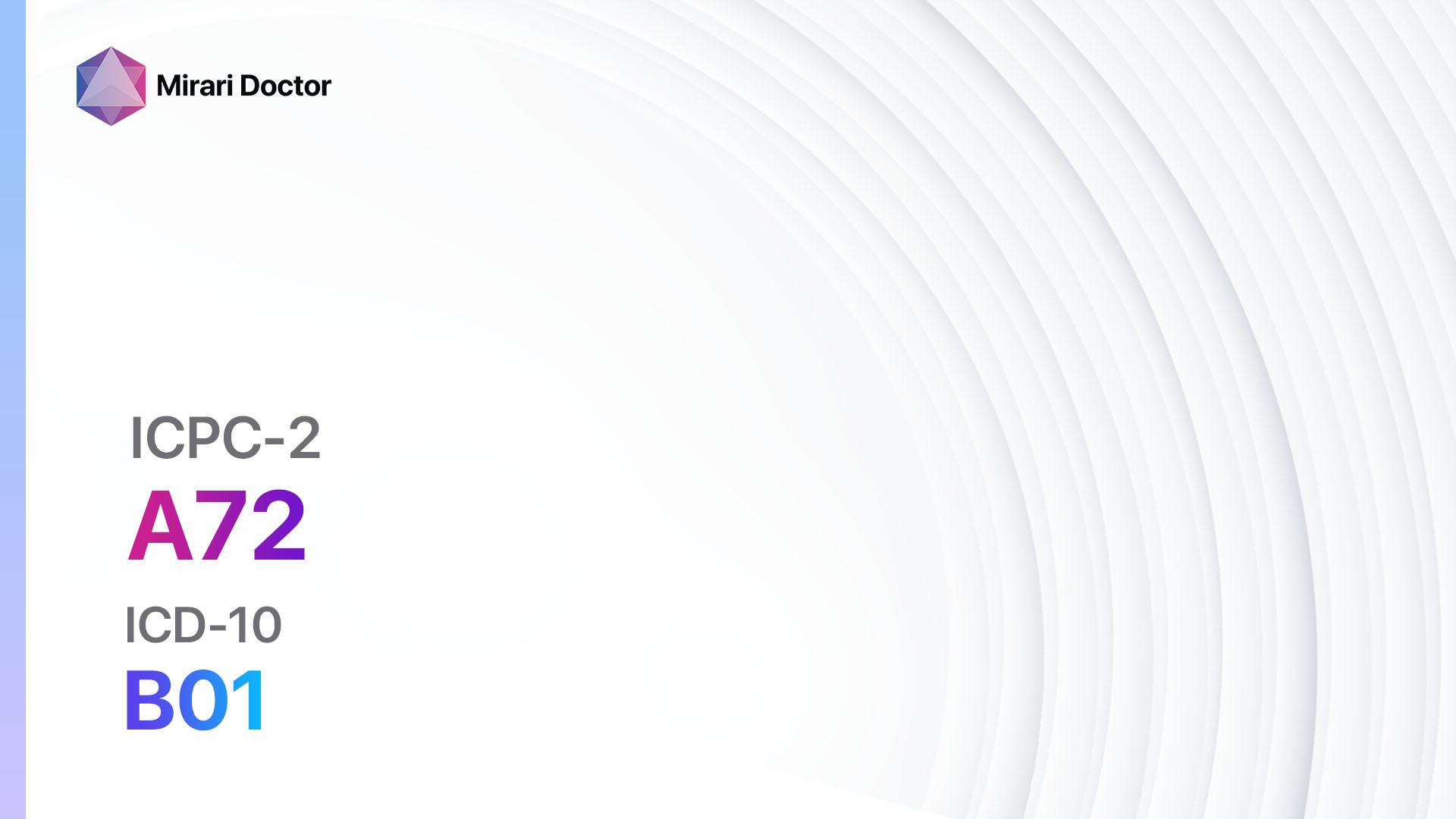
Introduction
Chickenpox, also known as varicella, is a highly contagious viral infection caused by the varicella-zoster virus (VZV)[1]. It is characterized by a rash of itchy, fluid-filled blisters that eventually crust over[2]. Chickenpox is most common in children, but can also affect adults who have not been previously infected or vaccinated[3]. The aim of this guide is to provide a comprehensive overview of the symptoms, causes, diagnostic steps, possible interventions, and lifestyle interventions for chickenpox.
Codes
- ICPC-2 Code: A72 Chickenpox
- ICD-10 Code: B01 Varicella [chickenpox]
Symptoms
- Rash: The hallmark symptom of chickenpox is a red, itchy rash that progresses to fluid-filled blisters. The rash typically starts on the face, chest, and back, and then spreads to other parts of the body[4].
- Fever: Many individuals with chickenpox develop a mild to moderate fever, usually ranging from 101°F to 102°F (38.3°C to 38.9°C)[5].
- Fatigue: Fatigue and general malaise are common symptoms of chickenpox[6].
- Headache: Some individuals may experience headaches, which can range from mild to severe[7].
- Loss of appetite: Chickenpox can cause a temporary loss of appetite in affected individuals[8].
- Sore throat: A sore throat may be present in some cases, especially in adults[9].
Causes
- Varicella-zoster virus (VZV): Chickenpox is caused by the varicella-zoster virus, which is highly contagious and spreads from person to person through respiratory droplets or direct contact with the fluid from the blisters of an infected individual[10].
- Airborne transmission: The virus can also be spread through the air when an infected person coughs or sneezes.
Diagnostic Steps
Medical History
- Gather information about the patient’s symptoms, including the presence of a rash, fever, fatigue, headache, sore throat, and loss of appetite.
- Ask about recent exposure to individuals with chickenpox or shingles.
- Inquire about the patient’s vaccination history.
Physical Examination
- Perform a thorough physical examination to assess the presence and characteristics of the rash, including the distribution, appearance, and stage of the blisters.
- Check for other symptoms such as fever, fatigue, headache, sore throat, and swollen lymph nodes.
Determine Severity
- Classify the disease based on severity and depth of involvement:
- Mild: Mild cases of chickenpox typically involve a limited number of blisters and mild symptoms.
- Moderate: Moderate cases may have a higher number of blisters and more pronounced symptoms.
- Severe: Severe cases may involve a large number of blisters, high fever, and severe symptoms.
Laboratory Tests
- Laboratory tests are usually not necessary for the diagnosis of chickenpox, as it can be diagnosed based on clinical presentation and history.
- However, in certain cases, laboratory tests may be performed to confirm the diagnosis or rule out other conditions, such as:
- Viral culture: A sample of fluid from the blisters may be collected and tested to identify the varicella-zoster virus.
- Polymerase chain reaction (PCR): PCR tests can detect the presence of viral DNA in the blood or other body fluids.
- Serologic testing: Blood tests can detect the presence of antibodies to the varicella-zoster virus, indicating a current or past infection.
Diagnostic Imaging
- Diagnostic imaging is not typically necessary for the diagnosis of chickenpox.
Other Tests
- No other specific diagnostic tests are typically required for the diagnosis of chickenpox.
Follow-up and Patient Education
- Advise the patient to rest and avoid contact with individuals who have not had chickenpox or been vaccinated.
- Educate the patient about the contagious nature of chickenpox and the importance of practicing good hygiene, such as frequent handwashing.
- Provide information about the expected course of the disease and when the patient can expect to recover.
Possible Interventions
Traditional Interventions
Medications:
Top 5 drugs for Chickenpox:
- Acetaminophen (e.g., Tylenol):
- Cost: $5-$10 for a bottle of generic acetaminophen.
- Contraindications: Hypersensitivity to acetaminophen.
- Side effects: Rare, but can include allergic reactions or liver damage with high doses.
- Severe side effects: Rare, but can include severe liver damage with overdose.
- Drug interactions: Alcohol, certain medications metabolized by the liver.
- Warning: Do not exceed the recommended dose.
- Antihistamines (e.g., Diphenhydramine, Loratadine):
- Cost: $5-$15 for a bottle of generic antihistamines.
- Contraindications: Hypersensitivity to antihistamines.
- Side effects: Drowsiness, dry mouth, dizziness.
- Severe side effects: Rare, but can include severe allergic reactions.
- Drug interactions: Alcohol, other sedating medications.
- Warning: May cause drowsiness, avoid driving or operating heavy machinery.
- Calamine lotion:
- Cost: $5-$10 for a bottle of calamine lotion.
- Contraindications: Hypersensitivity to calamine lotion.
- Side effects: Rare, but can include skin irritation or allergic reactions.
- Severe side effects: Rare, but can include severe allergic reactions.
- Drug interactions: None known.
- Warning: For external use only, avoid contact with eyes or mouth.
- Antiviral medications (e.g., Acyclovir, Valacyclovir):
- Cost: $20-$100 for a course of generic antiviral medications.
- Contraindications: Hypersensitivity to antiviral medications.
- Side effects: Nausea, vomiting, headache.
- Severe side effects: Rare, but can include severe allergic reactions or kidney problems.
- Drug interactions: Other medications that affect kidney function.
- Warning: Start antiviral treatment within 24-48 hours of rash onset for maximum benefit.
- Topical antipruritic creams (e.g., Hydrocortisone cream):
- Cost: $5-$10 for a tube of generic hydrocortisone cream.
- Contraindications: Hypersensitivity to hydrocortisone cream.
- Side effects: Rare, but can include skin irritation or allergic reactions.
- Severe side effects: Rare, but can include severe allergic reactions.
- Drug interactions: None known.
- Warning: For external use only, avoid contact with eyes or mouth.
Alternative Drugs:
- Oatmeal baths: Adding colloidal oatmeal to a bath can help soothe itching. Cost: $5-$10 for a box of colloidal oatmeal.
- Cool compresses: Applying cool, damp compresses to the affected areas can help relieve itching. Cost: Minimal.
- Antibiotics: Antibiotics may be prescribed if a secondary bacterial infection develops. Cost: Varies depending on the specific antibiotic.
Surgical Procedures:
- No surgical procedures are typically necessary for the treatment of chickenpox.
Alternative Interventions
- Cool mist humidifier: Using a cool mist humidifier in the patient’s room can help relieve dryness and itching. Cost: $20-$50 for a basic cool mist humidifier.
- Baking soda baths: Adding baking soda to a bath can help soothe itching. Cost: $5-$10 for a box of baking soda.
- Herbal remedies: Some herbal remedies, such as chamomile or calendula creams, may help relieve itching. Cost: Varies depending on the specific herbal remedy.
- Aloe vera gel: Applying aloe vera gel to the affected areas can help soothe itching and promote healing. Cost: $5-$10 for a bottle of aloe vera gel.
Lifestyle Interventions
- Keep the affected individual’s nails short to minimize the risk of scratching and secondary bacterial infections. Cost: Minimal.
- Encourage the affected individual to wear loose-fitting, breathable clothing to prevent irritation. Cost: Varies depending on the clothing.
- Provide a comfortable and cool environment to help alleviate discomfort. Cost: Minimal.
- Offer plenty of fluids to prevent dehydration. Cost: Varies depending on the fluids consumed.
- Avoid exposure to direct sunlight, as it can worsen the rash and increase the risk of complications. Cost: Minimal.
It is important to note that the cost ranges provided are approximate and may vary depending on the location and availability of the interventions.
Mirari Cold Plasma Alternative Intervention
Understanding Mirari Cold Plasma
- Safe and Non-Invasive Treatment: Mirari Cold Plasma is a safe and non-invasive treatment option for various skin conditions. It does not require incisions, minimizing the risk of scarring, bleeding, or tissue damage.
- Efficient Extraction of Foreign Bodies: Mirari Cold Plasma facilitates the removal of foreign bodies from the skin by degrading and dissociating organic matter, allowing easier access and extraction.
- Pain Reduction and Comfort: Mirari Cold Plasma has a local analgesic effect, providing pain relief during the treatment, making it more comfortable for the patient.
- Reduced Risk of Infection: Mirari Cold Plasma has antimicrobial properties, effectively killing bacteria and reducing the risk of infection.
- Accelerated Healing and Minimal Scarring: Mirari Cold Plasma stimulates wound healing and tissue regeneration, reducing healing time and minimizing the formation of scars.
Mirari Cold Plasma Prescription
Video instructions for using Mirari Cold Plasma Device – A72 Chickenpox (ICD-10:B01)
| Mild | Moderate | Severe |
| Mode setting: 1 (Infection) Location: 0 (Localized) Morning: 15 minutes, Evening: 15 minutes |
Mode setting: 1 (Infection) Location: 0 (Localized) Morning: 30 minutes, Lunch: 30 minutes, Evening: 30 minutes |
Mode setting: 1 (Infection) Location: 0 (Localized) Morning: 30 minutes, Lunch: 30 minutes, Evening: 30 minutes |
| Mode setting: 2 (Wound Healing) Location: 0 (Localized) Morning: 15 minutes, Evening: 15 minutes |
Mode setting: 2 (Wound Healing) Location: 0 (Localized) Morning: 30 minutes, Lunch: 30 minutes, Evening: 30 minutes |
Mode setting: 2 (Wound Healing) Location: 0 (Localized) Morning: 30 minutes, Lunch: 30 minutes, Evening: 30 minutes |
| Mode setting: 3 (Antiviral Therapy) Location: 0 (Localized) Morning: 15 minutes, Evening: 15 minutes |
Mode setting: 3 (Antiviral Therapy) Location: 0 (Localized) Morning: 30 minutes, Lunch: 30 minutes, Evening: 30 minutes |
Mode setting: 3 (Antiviral Therapy) Location: 0 (Localized) Morning: 30 minutes, Lunch: 30 minutes, Evening: 30 minutes |
| Mode setting: 7 (Immunotherapy) Location: 1 (Sacrum) Morning: 15 minutes, Evening: 15 minutes |
Mode setting: 7 (Immunotherapy) Location: 1 (Sacrum) Morning: 30 minutes, Lunch: 30 minutes, Evening: 30 minutes |
Mode setting: 7 (Immunotherapy) Location: 1 (Sacrum) Morning: 30 minutes, Lunch: 30 minutes, Evening: 30 minutes |
| Total Morning: 60 minutes approx. $10 USD, Evening: 60 minutes approx. $10 USD |
Total Morning: 120 minutes approx. $20 USD, Lunch: 120 minutes approx. $20 USD, Evening: 120 minutes approx. $20 USD, |
Total Morning: 120 minutes approx. $20 USD, Lunch: 120 minutes approx. $20 USD, Evening: 120 minutes approx. $20 USD, |
| Usual treatment for 7-60 days approx. $140 USD – $1200 USD | Usual treatment for 6-8 weeks approx. $2,520 USD – $3,360 USD |
Usual treatment for 3-6 months approx. $5,400 USD – $10,800 USD
|
 |
|
Use the Mirari Cold Plasma device to treat Chickenpox effectively.
WARNING: MIRARI COLD PLASMA IS DESIGNED FOR THE HUMAN BODY WITHOUT ANY ARTIFICIAL OR THIRD PARTY PRODUCTS. USE OF OTHER PRODUCTS IN COMBINATION WITH MIRARI COLD PLASMA MAY CAUSE UNPREDICTABLE EFFECTS, HARM OR INJURY. PLEASE CONSULT A MEDICAL PROFESSIONAL BEFORE COMBINING ANY OTHER PRODUCTS WITH USE OF MIRARI.
Step 1: Cleanse the Skin
- Start by cleaning the affected area of the skin with a gentle cleanser or mild soap and water. Gently pat the area dry with a clean towel.
Step 2: Prepare the Mirari Cold Plasma device
- Ensure that the Mirari Cold Plasma device is fully charged or has fresh batteries as per the manufacturer’s instructions. Make sure the device is clean and in good working condition.
- Switch on the Mirari device using the power button or by following the specific instructions provided with the device.
- Some Mirari devices may have adjustable settings for intensity or treatment duration. Follow the manufacturer’s instructions to select the appropriate settings based on your needs and the recommended guidelines.
Step 3: Apply the Device
- Place the Mirari device in direct contact with the affected area of the skin. Gently glide or hold the device over the skin surface, ensuring even coverage of the area experiencing.
- Slowly move the Mirari device in a circular motion or follow a specific pattern as indicated in the user manual. This helps ensure thorough treatment coverage.
Step 4: Monitor and Assess:
- Keep track of your progress and evaluate the effectiveness of the Mirari device in managing your Chickenpox. If you have any concerns or notice any adverse reactions, consult with your health care professional.
Note
This guide is for informational purposes only and should not replace the advice of a medical professional. Always consult with your healthcare provider or a qualified medical professional for personal advice, diagnosis, or treatment. Do not solely rely on the information presented here for decisions about your health. Use of this information is at your own risk. The authors of this guide, nor any associated entities or platforms, are not responsible for any potential adverse effects or outcomes based on the content.
Mirari Cold Plasma System Disclaimer
- Purpose: The Mirari Cold Plasma System is a Class 2 medical device designed for use by trained healthcare professionals. It is registered for use in Thailand and Vietnam. It is not intended for use outside of these locations.
- Informational Use: The content and information provided with the device are for educational and informational purposes only. They are not a substitute for professional medical advice or care.
- Variable Outcomes: While the device is approved for specific uses, individual outcomes can differ. We do not assert or guarantee specific medical outcomes.
- Consultation: Prior to utilizing the device or making decisions based on its content, it is essential to consult with a Certified Mirari Tele-Therapist and your medical healthcare provider regarding specific protocols.
- Liability: By using this device, users are acknowledging and accepting all potential risks. Neither the manufacturer nor the distributor will be held accountable for any adverse reactions, injuries, or damages stemming from its use.
- Geographical Availability: This device has received approval for designated purposes by the Thai and Vietnam FDA. As of now, outside of Thailand and Vietnam, the Mirari Cold Plasma System is not available for purchase or use.
References
- Centers for Disease Control and Prevention. (2021). Chickenpox (Varicella). https://www.cdc.gov/chickenpox/index.html
- Mayo Clinic. (2021). Chickenpox. https://www.mayoclinic.org/diseases-conditions/chickenpox/symptoms-causes/syc-20351282
- World Health Organization. (2019). Varicella. https://www.who.int/immunization/diseases/varicella/en/
- American Academy of Dermatology. (2021). Chickenpox: Signs and symptoms. https://www.aad.org/public/diseases/a-z/chickenpox-symptoms
- Gershon, A. A., Breuer, J., Cohen, J. I., Cohrs, R. J., Gershon, M. D., Gilden, D., Grose, C., Hambleton, S., Kennedy, P. G. E., Oxman, M. N., Seward, J. F., & Yamanishi, K. (2015). Varicella zoster virus infection. Nature Reviews Disease Primers, 1(1), 1-18. https://doi.org/10.1038/nrdp.2015.16
- Leung, A. K. C., Barankin, B., & Hon, K. L. (2018). Herpes Zoster in Childhood: Clinical Features, Complications, and Vaccination. Current Pediatric Reviews, 14(1), 28-34. https://doi.org/10.2174/1573396314666180516095043
- Wolfson, L. J., Daniels, V. J., Altland, A., Black, W., & Huang, W. (2020). The Impact of Varicella Vaccination on the Incidence of Varicella and Herpes Zoster in the United States: Updated Evidence From Observational Databases, 1991-2016. Clinical Infectious Diseases, 70(6), 995-1002. https://doi.org/10.1093/cid/ciz305
- Streng, A., Grote, V., Rack-Hoch, A., Hagemann, C., Liese, J. G. (2017). Decline of Neurologic Varicella Complications in Children During the First Seven Years After Introduction of Universal Varicella Vaccination in Germany, 2005-2011. The Pediatric Infectious Disease Journal, 36(1), 79-86. https://doi.org/10.1097/INF.0000000000001356
- Gnann, J. W. (2002). Varicella-Zoster Virus: Atypical Presentations and Unusual Complications. The Journal of Infectious Diseases, 186(Supplement_1), S91-S98. https://doi.org/10.1086/342963
- Centers for Disease Control and Prevention. (2021). Chickenpox (Varicella): Transmission. https://www.cdc.gov/chickenpox/about/transmission.html
Related articles
Made in USA









